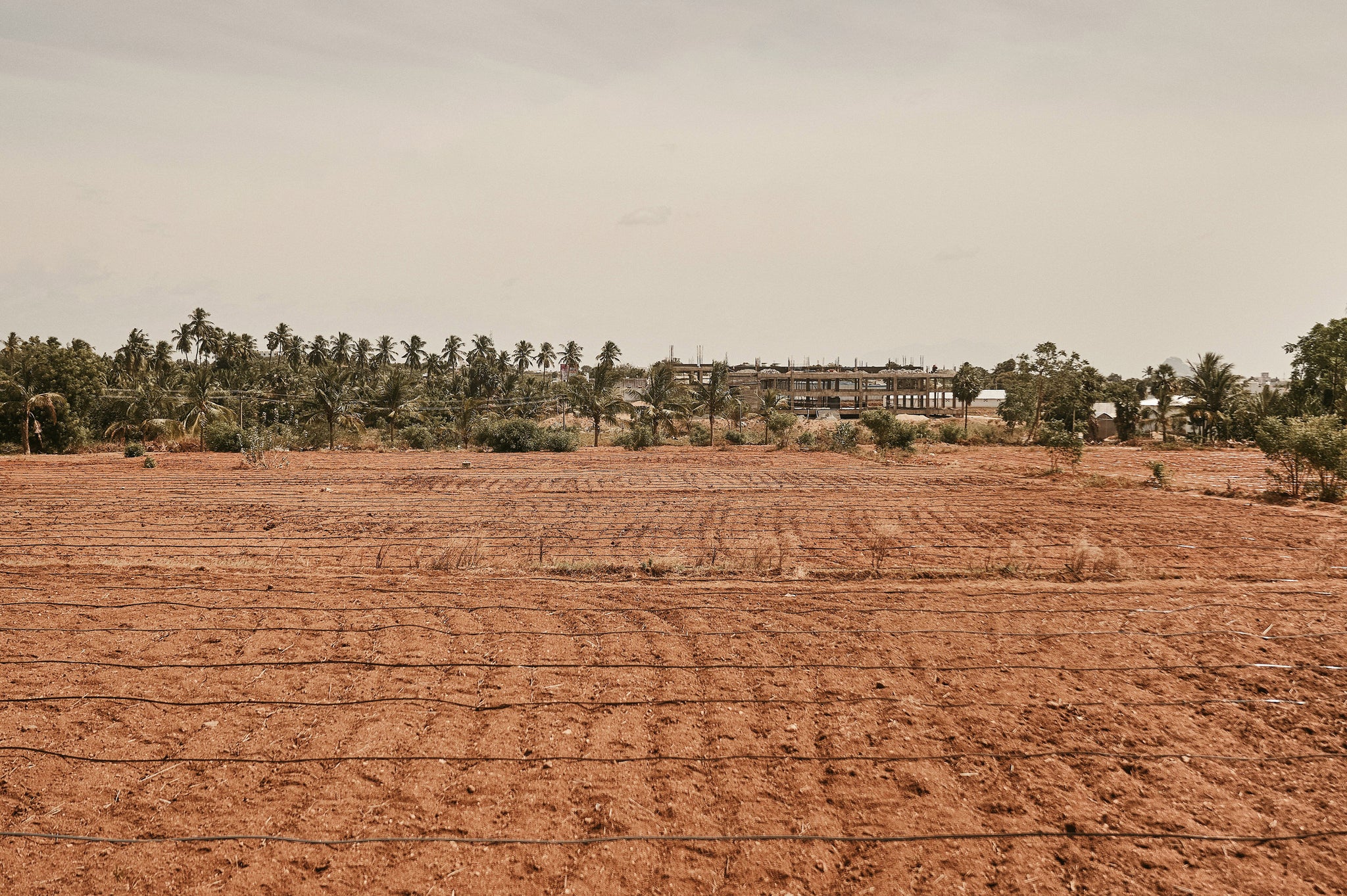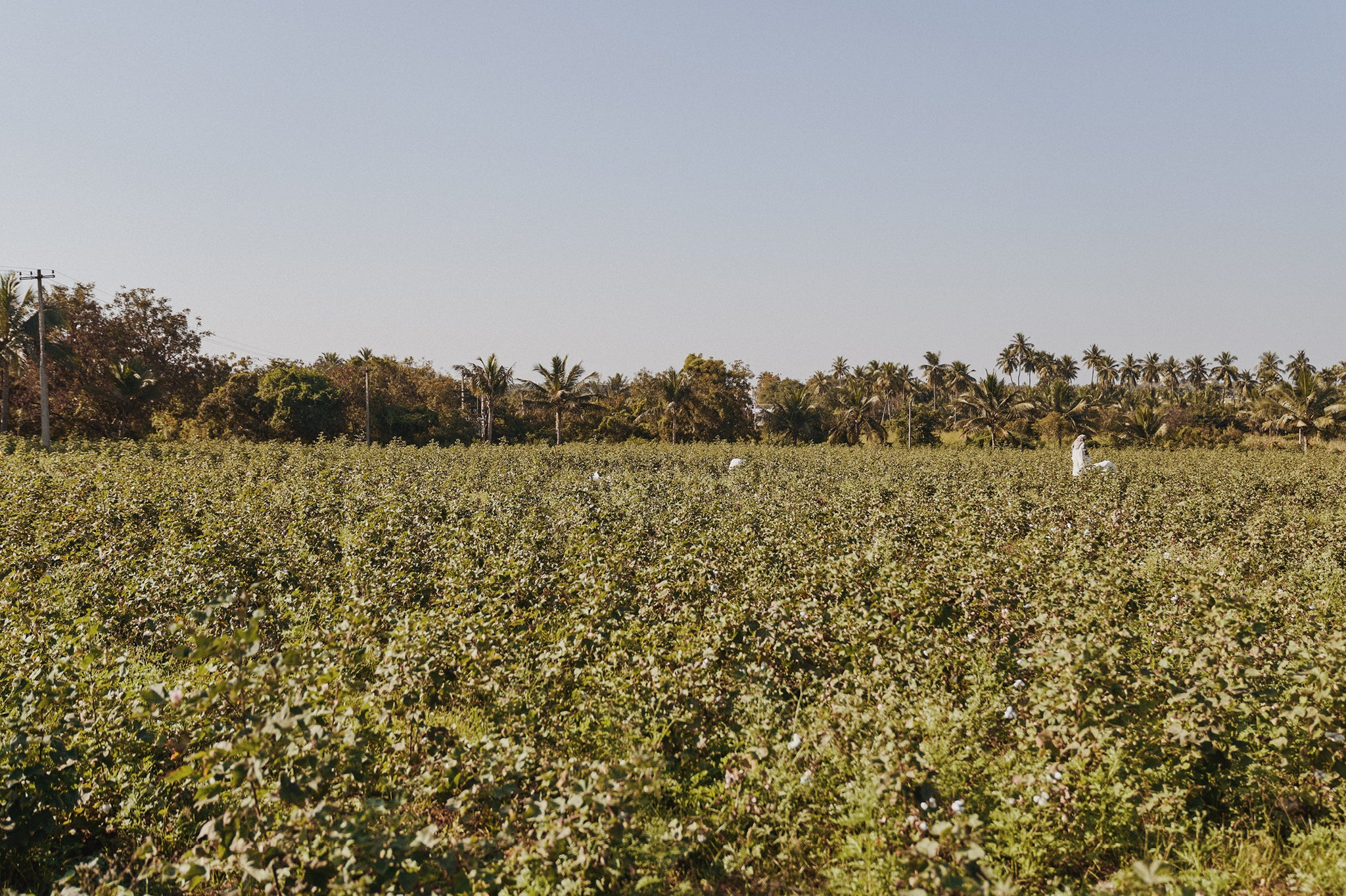Slide to see the Farm from where we started to now!
Introduction
The cotton is ready for harvest! After six months of nourishing fallow land, the farmers began harvesting cotton and the yield is better than we expected. We can attribute the bountiful harvest to the regenerative farm community working in harmony with Mother Nature. She, in return, gifted us with abundant, healthy cotton.
Oshadi Collective’s community of farmers in India is harvesting the cotton by hand. They walk the fields over the course of three months, plucking the mature cotton bolls. In February, members of the Christy Dawn team—Christy, Aras, Tori, and Mairin—traveled to experience the start of the harvest firsthand. They spent a week on the farm, meeting with the farmers, learning about the harvesting process, and planning for the next season of cotton production with Oshadi Collective.
The farm and soil have gone through a total transformation since the farmers planted seeds in August. The soil is a dark brown, full of nutrients and organic matter. The farm is bursting with life. Not only are the cotton plants healthy and hardy, but the flowers and other flora around the farm also grew in abundance this season.
As we conclude our first season on our journey to become a farm-to-closet company, we are excited about the potential for the project to grow and regenerate more landscapes.

Christy made it out to visit the farm in time to catch the cotton in bloom...
The Lifecycle Of A Cotton Flower

In the final stages of a cotton plant, it produces flowers that make way for seeds encased in white and fluffy fiber. There is an amazing transformation that the plant goes through during this phase:

Off the main stem, the plant grows small fruiting branches with nodes where buds begin to form

The cotton plant forms buds from pulling energy from the plant’s leaves

The buds open in the morning to reveal a small, blossoming flower

As the flower grows, it turns from white to yellow to fuchsia, while the flower self-pollinates with help from insects

The flower wilts and falls to the ground, making a cotton boll with hard green walls

The boll grows, hardens and opens to reveal cotton seeds encased in white fiber

The long white fiber protects the seed and serves as a sail to catch the wind and spread the seeds

Once in the ground, the fibers act as a sponge for water to help the cotton seed germinate
The regenerative relationship between the soil and cottonseed continues as the small seed transforms into a strong, beautiful plant
Notes From The Field
Cotton Harvest
Farmers harvest all the cotton by hand. It is a lot of hard work, but there are no mechanical harvest options for small farms. The only machine that harvests cotton costs a small fortune and only works for large, industrial farms. So all of the millions of cotton farmers in India, the second-largest producer of cotton globally, pick the cotton by hand.
To harvest the full yield of cotton from a field requires numerous passes. The cotton bolls mature at different times during a three-month period, so the farmers walk the fields every day, collecting the mature cotton seeds and fibers.
What’s Next
Once the harvest is finished, the by-products from the farm go on numerous journeys.

The seeds and fibers
The cottonseed and its fibrous coating are sent to a gin where the combs and saws pull the cotton fibers off the seed. The seed is then saved to be used next season and to make cottonseed milk. Oshadi Collective processes the cotton fiber. First it goes to a spinning mill where it is turned into yarn, then it will be woven into fabric and sewn into dresses.

The cotton plants
The farmers cut down the rest of the cotton plant and either add it to the compost or leave it as mulch. After months of introducing nutrients through vermicompost and other traditional fertilizers, it is crucial to cycle the cotton plants back into the soil. As the plants decompose with help from microorganisms, nutrients are reintroduced to the soil in plant-available forms. The decomposition process results in soil organic matter, the most important ingredient in healthy soil.

The Land
The farmers will begin cultivating the land again after the harvest is over. For the next season, we will be growing indigo and tomatoes on the land. Indigo is a legume and reintroduces nitrogen to the soil and we can use the harvested leaves to naturally dye cotton blue. Tomatoes are a staple of the south Indian diet and provide good fertilizer carryover.
Illustrations by Audrey Hellen Webber
Contributing Writer Mairin Wilson





















